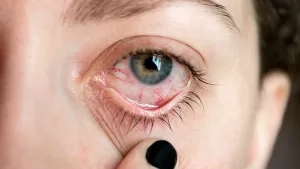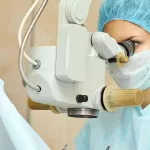
Common Eye Diseases in Nepal and Their Treatment Options
Introduction:
Various eye diseases that pose significant health challenges has been affecting major population of Nepal. These eye diseases can result in severe visual impairments and, in extreme cases, complete blindness. In this article, we will discuss the most common eye diseases in Nepal and their treatment options.
1. Cataracts:
Cataracts are the leading cause of blindness in Nepal, affecting over 70% of people over the age of 60. It is a condition where the lens of the eye becomes cloudy, leading to blurry vision, difficulty seeing in low light, and halos around lights.
Cause of cataracts:
– Aging – Injuries
– Congenital Cause – Use of Medications such as steroids
– Patients with Diabetes – Excessive exposure to sunlight
Cataract Surgery is an only option to get rid of Cataracts. If untreated timely, it can lead to other complications such as Glaucoma.
2. Glaucoma:
Glaucoma is another common eye disease in Nepal that affects the optic nerve, leading to vision loss and blindness. It is often referred to as the “silent thief of sight” because it progresses slowly and without symptoms until it’s too late.
Risk factors for glaucoma:
– Genetics – High Refractive error
– High ocular pressure – Long Standing Cataract
– Diabetes and Hypertension – Injuries
Treatment options includes;
i. Eye drops: are the first line of treatment and work by reducing the pressure inside the eye.
ii. Laser surgery: is done to reduce eye pressure, if eye drops shows no reduction.
iii. Surgical Approach: Trabeculectomy surgery is done in severe cases where other treatments fail.
3. Trachoma:
Trachoma is a bacterial infection that affects the eyes and can lead to blindness if left untreated. More common in rural areas with poor sanitation and hygiene, it is caused by the bacterium Chlamydia trachomatis and spreads through personal contact, contaminated objects, or flies.
Symptoms include:
– Redness
– Discharge
– Itching of the eyes
– Eyelid Swelling
– Blurring of Vision
– Light sensitivity
Treatment includes:
i. Antibiotics: are the primary treatment to kill the bacteria that cause the infection.
ii. Facial cleanliness: is essential to prevent the spread of trachoma.
iii. Surgery: may be required in severe cases to prevent scarring of the eyelid.
iv. Environmental improvement to reduce transmission.
4. Dry Eye Syndrome:
Dry eye syndrome is a condition where the eyes do not produce enough tears or the tears gets evaporated in quicker rate leading to dryness, irritation, and redness.
Causes of DES:
– Age
– Prolonged use of electronic devices
– Hormonal changes
– Environmental conditions
– Certain medications.
Treatment includes:
– Use of Artificial tears: provide temporary relief from dryness and irritation.
– Taking frequent breaks from computer use.
– Avoiding smoking.
– Avoiding exposure to windy environments.
5. Conjunctivitis:
Conjunctivitis, also known as pink eye, is a common eye infection in Nepal that affects the conjunctiva, the thin layer that covers the white part of the eye and lines the inside of the eyelid. Conjunctivitis is highly contagious and can spread through direct contact with infected eye discharge or contaminated objects.
Symptoms includes:
– Redness
– Itching
– Watering eyes
– Discharge
– Sensitivity to light.
Treatment options depend on the underlying cause:
i. Bacterial conjunctivitis can be treated with antibiotics
ii. Viral conjunctivitis is treated with antiviral eye drops however, resolves on its own within a few days
iii. Allergic conjunctivitis can be managed with antihistamines and avoidance of triggers and avoiding contact with irritants such as smoke, chemicals, and dust.
Common Preventive measures:
1. Regular eye exams: It is essential to have regular eye exams to detect any eye problems early and prevent vision loss.
2. Proper nutrition: Eating a balanced diet rich in fruits and vegetables can help maintain good eye health.
3. Eye protection: Wearing sunglasses and protective eyewear can prevent eye injuries and damage from UV rays.
4. Proper hygiene: Washing hands frequently, avoiding touching the eyes, and avoiding sharing personal items such as towels and contact lenses can prevent the spread of eye infections.





